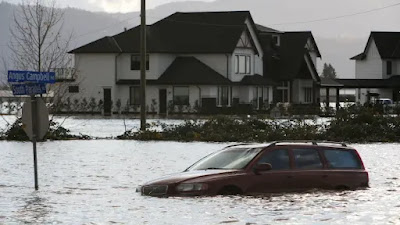QUESTION
What regions of Canada are the most prone to tornados and what types of insurance cover tornado damage?
ANSWER
Tornados are relatively rare in Canada compared to the United States, but there are still regions that are more prone to tornado activity. The areas with the highest frequency of tornados in Canada are:
- Southern Ontario: The region known as "Tornado Alley," which includes areas around Windsor, London, and the Greater Toronto Area, experiences the most frequent tornado activity in Canada.
- Southern Manitoba: The Red River Valley in southern Manitoba, including cities like Winnipeg, can also experience tornados, particularly during the summer months.
- Southern Alberta and Saskatchewan: The southern parts of Alberta and Saskatchewan, including areas around Calgary, Regina, and Saskatoon, occasionally witness tornados.
Insurance coverage for tornado damage typically falls under a standard homeowners' insurance policy. Most homeowners' insurance policies in Canada cover tornado damage as part of their windstorm coverage. However, it's crucial to review the specifics of your policy and consult with your insurance provider to ensure you have adequate coverage.
When assessing your insurance policy for tornado coverage, consider the following:
- Dwelling coverage: This covers damage to the structure of your home caused by tornados, including repairs or reconstruction.
- Personal property coverage: This provides coverage for your belongings, such as furniture, appliances, and clothing, if they are damaged or destroyed by a tornado.
- Additional living expenses coverage: If a tornado makes your home uninhabitable, this coverage helps pay for temporary living expenses, such as hotel stays or rental accommodations, until your home is repaired or rebuilt.
- Deductibles: Be aware of the deductibles associated with windstorm or tornado damage. It's essential to understand the amount you would need to pay out-of-pocket before your insurance coverage kicks in.
Remember to review your policy carefully, ask your insurance provider any specific questions you have about tornado coverage, and consider purchasing additional coverage if you live in an area prone to tornados to ensure adequate protection for your property.
A BRIEF HISTORY OF ONTARIO'S TORNADO ALLEY
Early History: Tornado records in Ontario date back to the mid-19th century. However, due to limited reporting and documentation, the early history of tornados in the region is not well-documented.
1913: On June 13, 1913, a tornado struck the town of Thorold, located in the Niagara Peninsula. This tornado caused significant damage to buildings and infrastructure in the area.
1944: On June 17, 1944, a series of tornados swept through the southern parts of Ontario and the Greater Toronto Area. The most destructive tornado of the outbreak hit the city of Windsor, causing widespread damage and resulting in 9 fatalities.
1974: The Windsor-Ottawa Tornado Outbreak, which took place on April 3, 1974, affected multiple regions across southern Ontario. Several tornadoes were reported, with Windsor, Ontario, being one of the hardest-hit areas. The outbreak resulted in extensive property damage and multiple fatalities.
1985: The Barrie Tornado Outbreak took place on May 31, 1985, affecting several communities in central Ontario, including the city of Barrie. This outbreak produced multiple tornados, including an F4 tornado, which is considered a strong tornado on the Fujita scale. The F4 tornado struck Barrie, resulting in 8 fatalities and causing significant damage.
1987: On August 2, 1987, a tornado touched down in the town of Sarnia, located near Lake Huron. The tornado caused severe damage to homes, businesses, and a recreational park.
1996: On July 15, 1996, a series of tornados hit Ontario, including areas within Tornado Alley. The town of Grand Valley was particularly affected, as an F3 tornado caused severe damage and claimed the lives of 3 people.
2002: The Angus Tornado, also known as the Barrie-Bradford Tornado, occurred on May 31, 2002. This F2 tornado struck the town of Angus, located near Barrie, causing significant damage to residential areas and resulting in 2 fatalities.
2009: On August 20, 2009, a tornado outbreak occurred in Ontario's Tornado Alley. Multiple tornados were reported, with one striking the city of Vaughan, a suburb of Toronto. This F2 tornado caused extensive damage, including the collapse of a large retail store, resulting in 1 fatality.
2011: On June 6, 2011, a tornado outbreak affected several regions in Ontario, including the areas of Midland, Huntsville, and Lake Nipissing. Multiple tornadoes were reported, causing damage to buildings, trees, and power lines.
2013: The Elmvale Tornado, which occurred on June 17, 2013, struck the town of Elmvale, located in Simcoe County. This F2 tornado caused damage to homes, vehicles, and agricultural structures.
2018: On September 21, 2018, a tornado outbreak occurred in eastern Ontario, primarily affecting the Ottawa-Gatineau region. Several tornadoes were reported, including an EF3 tornado that caused extensive damage in the community of Dunrobin, resulting in several injuries.
Recent Years: Tornado activity has continued in Ontario's Tornado Alley in recent years. Although tornados in the region tend to be relatively weak compared to those in the United States, they can still cause significant damage and pose risks to communities.




















